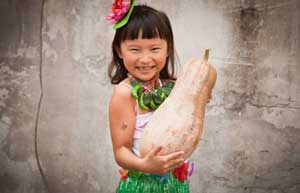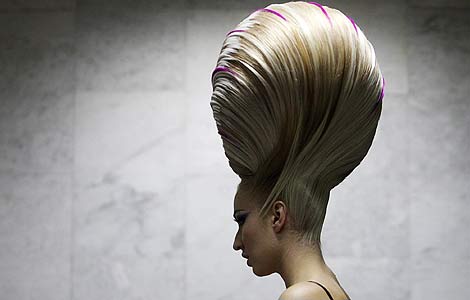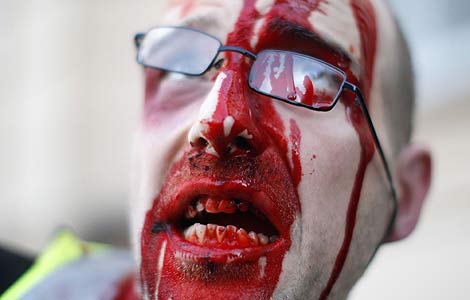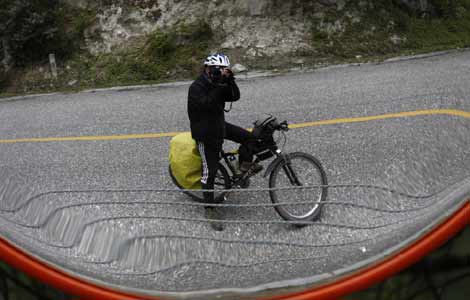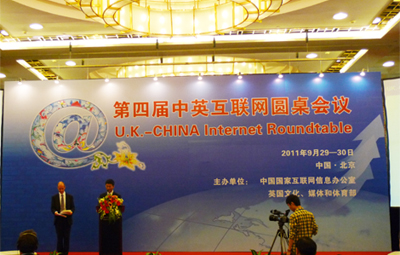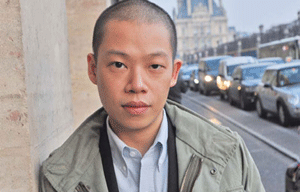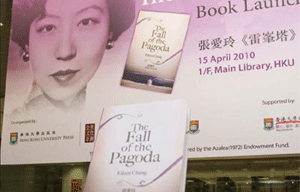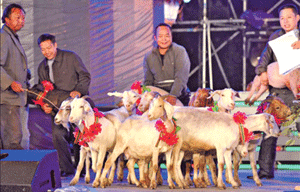Sepia's new hue
Updated: 2011-09-30 09:19
By Su Zhou (China Daily)
|
|||||||||
|
Portraits of Mao Zedong, Liu Shaoqi (left) and Zhou Enlai (right) grace China Photo Studio, which has played host to many a famous face. Provided to China Daily |
A famed photo studio has never lost its old-style touch
Yao Jianzhong has devoted 33 years of his working life to China Photo Studio; his late father gave it 40 years of his life. At their beloved photo studio, tradition is treated as a treasure rather than as an outdated encumbrance.
The studio remains faithful to a traditional style of wedding photography that appeals to many couples, notably where one of the pair is not Chinese, but where both have a soft spot for Chinese culture and its trappings.
"We have more foreign couples during holidays, usually a Chinese bride with a foreign groom," says Yao, senior pre-wedding photographer at China Photo Studio.
"We have got used to photo shoots for foreigners that take into account their cultural preferences, styles and traditions." The studio was set up in Shanghai in 1937 and moved to Beijing in 1956.
The portfolio of subjects who have enjoyed the attention of China Photo Studio's cameras over the years is impressive, and includes the Chinese premier Zhou Enlai, the United Nations secretary-general Kofi Annan, and, in more recent times, the actor-politician Arnold Schwarzenegger and the actor Jet Li.
While the studio's works have been circulated by many people over the decades, the widespread respect it gained never quite translated into matching commercial success until about 12 years ago.
In the 1990s a wave of studios from Taiwan and Hong Kong equipped with advanced equipment and new ideas arrived on the scene, and many photo studios in Beijing quietly closed. China Photo Studio also felt the pain, but, with a few others, managed to survive.
It now has six branches in Beijing and plans to open a new branch in the capital every year.
China Photo Studio seems not only to relish its traditions but also to flaunt them. On ultra-switched-on, modernized Wangfujing Street in Beijing, China Photo Studio looks stubbornly on, its building decked in the clothes of a bygone era.
"It reminds me of the old times when the People's Republic of China was founded in 1949," says Sun Liyun, a tourist from Anhui province, standing in front of China Photo Studio.
While other studios snap up trendy, young photographers, China Photo Studio sticks by tradition and doffs a cap of respect to its senior staff. Yao is one such.
Yao was trained by his father, China Photo Studio's first manager in Beijing, who specialized in portrait photography and who took his son's wedding photos.
The four decades during which Yao's father worked with China Photo Studio were its golden years. Before moving to Beijing, its turnover surpassed the total of all three other photo studios in Shanghai; after moving to the capital it was favored by high-ranking officials, including the premier Zhou Enlai.
Yao's father also brought back photos that featured western wedding gowns, which gave a fillip to the wedding photo industry after the "cultural revolution" (1966-1976).
"In 1978, for political reasons, no one dared say 'Let's take some fancy wedding photos' but my father insisted on doing so," Yao says.
Though the equipment was basic, it introduced to the country a new fashion in wedding photos that would later dominate the industry.
Couples had to line up in front of the studios early just to get a queue card. Two hundred cards were given out each day, but sometimes there were photo sessions for 260 couples.
"At that time, taking pre-wedding photos was a luxury for many people. A set of pre-wedding photos including four photos cost more than 100 yuan." Yao's salary was about 21 yuan a month.
Yet, despite the cost the couples came from near and far. Liu Zhen, a middle school teacher in Nanjing, Jiangsu province, says that for her mother having photos taken at China Wedding Photo was a dream.
All these years, Yao continues to make the most of the skills his father taught him.
"We still maintain our advantage, such as the skills of portrait photography. We don't change customers into a fairy using fancy dresses and cosmetics; we capture their splendid moments by observing their behavior and by choosing proper angle and light."
Such techniques seem to be paying off, China Photo Studio's manager, Sun Xiuzhen, says the studio turned in a profit of 50 million yuan ($7.8 million) last year and expects that to rise by 50 percent this year.
"Taking pre-wedding photos is like bearing witness to a couple's happiness. I really am so lucky," Yao says.
Luo Wangshu contributed to this story.


